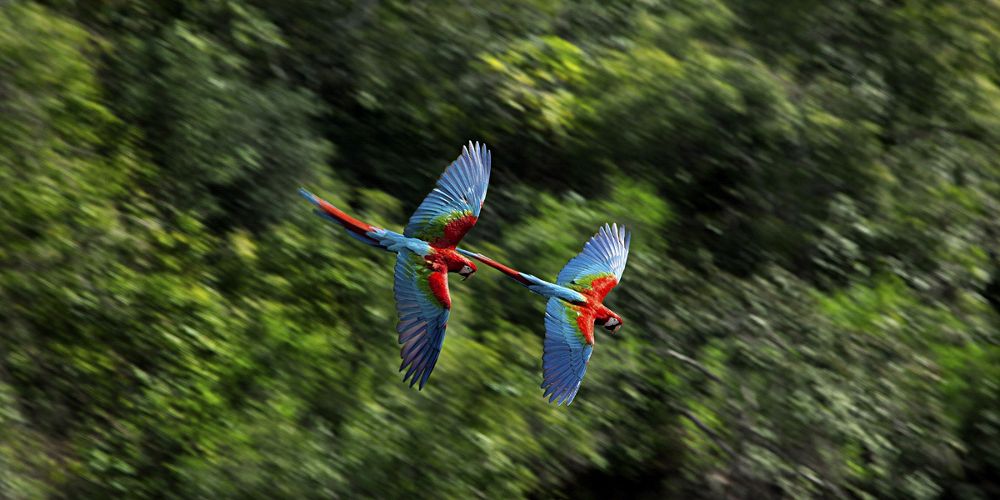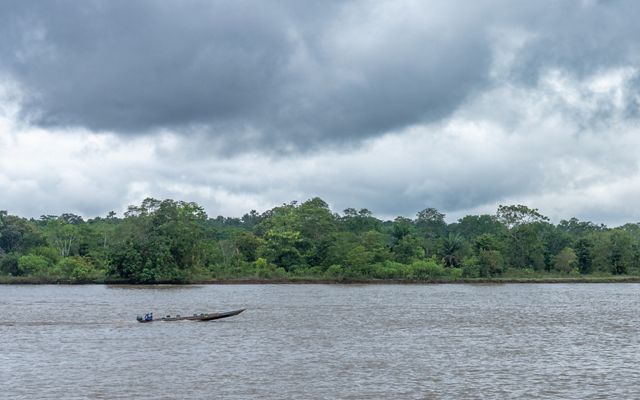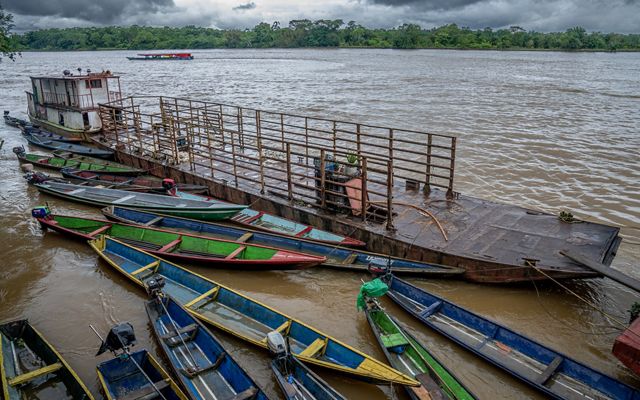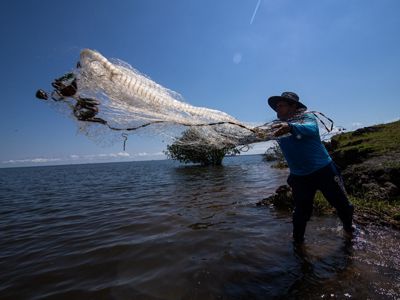The Rhythm of the Rivers
Navigating the Amazon Basin in a world shaped by climate change.
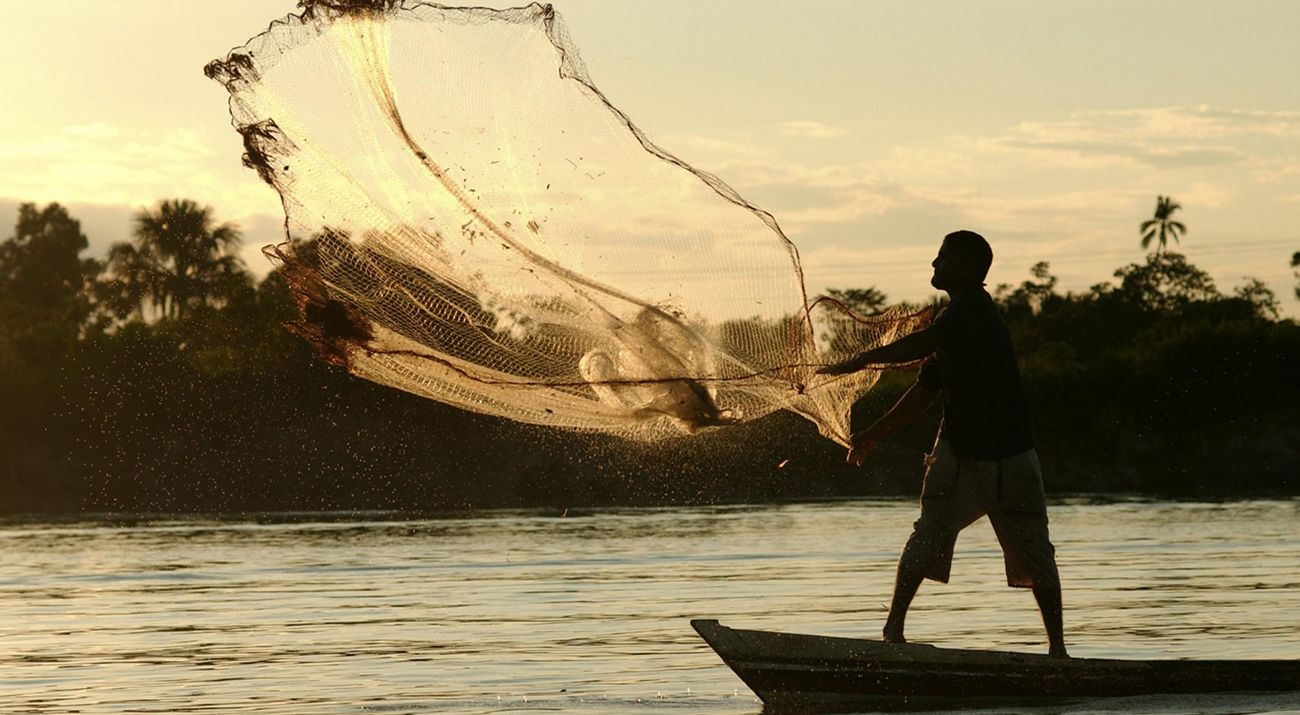
“When the river starts to rise, its sound changes.”
Aquiles Wiles Piranga Cruz, a member of the Koreguaje peoples in Colombia’s Caquetá region, has spent his life listening to rivers. His words reflect a deep, ancestral understanding shared by the more than 400 different Indigenous communities that have lived in rhythm with the waters of the Amazon River Basin for millennia.
Spanning nine countries and covering 40% of South America, the basin encompasses the largest tropical forest on Earth. As climate change intensifies, the world has been increasingly focused on the Amazon Rainforest’s ability to store planet-warming carbon—and the dire consequences of its loss.
But beneath the canopy, it’s water that sustains this ecosystem—thousands of rivers and wetlands forming the most intricate freshwater network on Earth. The Amazon River Basin generates one of every five raindrops as it influences global weather systems and supports more than 2,700 fish species and 47 million people, including 2.2 million Indigenous Peoples like Piranga.
For these communities, climate change is felt in the rising and falling of the rivers, in the unpredictability of rain, in the erosion of riverbanks and in the pollution of life-giving flows. Their survival depends on how they adapt.
The Amazon River Basin...
-
1 in 5
Generates one in every five raindrops.
-
2700+
Supports more than 2,700 species of fish.
-
47M
Sustains 47 million people, including 2.2 million Indigenous people.
Quote: Aquiles Wiles Piranga Cruz
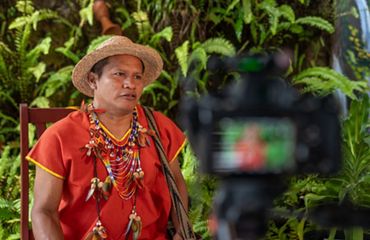
Now it rains in any season, at any moment.
When the water stops working:
Cycles of disruption in the Amazon Basin
Last year, one of the worst droughts in the basin’s recorded history shriveled rivers to their lowest levels in 120 years. Meanwhile, unpredictable storms and sudden flooding deluge riverbanks in an intensifying cycle of extremes. A recent study in the Amazon rainforest reveals that wet seasons are seeing more intense rainfall and dry seasons are getting longer, as the once-predictable water cycle breaks down.
Piranga realizes these changes along the Orteguaza River, a tributary that flows into the Caquetá River just before reaching the region’s urban center. The Caquetá is one of the basin’s longest rivers, guiding creeks and streams and smaller rivers like the Orteguaza into the Amazon, and, eventually, out to the Atlantic Ocean. It’s also a road; the Caquetá River is the only way to access many of the remote towns across the Caquetá region, where Aquiles and hundreds of Indigenous communities build their lives.
“Everything moves here by water,” says Roberto Ordoñez, an Ismuina Indigenous community leader who also lives in the Caquetá region, in the municipality of Solano. “From Florencia (the capital of the department) it's a four-hour trip in a motorboat to reach Solano.”
Our global insights, straight to your inbox
Get our latest research, perspectives and solutions to today’s sustainability challenges.
Sign upRipple effects: Threats augmented by a changing climate
As floods and droughts make river travel more difficult for Ordoñez, pressures on land intensify these climate challenges.
“Fragmentation from dams; deforestation for farming, mining and oil extraction; and unsustainable fishing all intensify the damaging impacts of climate change on the basin’s waterways,” explains Silvia Benitez, Freshwater Director for TNC Latin America. “These are interconnected systems, meaning that what happens upstream has repercussions further downstream on local people and freshwater species—sometimes thousands of kilometers away.”
For example, unsustainable farming, logging, and mining all strip riverbanks of trees. Without this natural protection, climate-driven floods erode bare banks, widening rivers and making them shallower—and more vulnerable to drying during droughts, explains Ordoñez.
Quote: Roberto Ordoñez
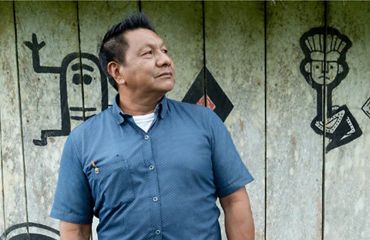
For us, it's essential that the riverbed doesn't dry up. Because that's how we conduct our entire system of trade and communication. That's how we bring in the products we don’t produce here in the territory.
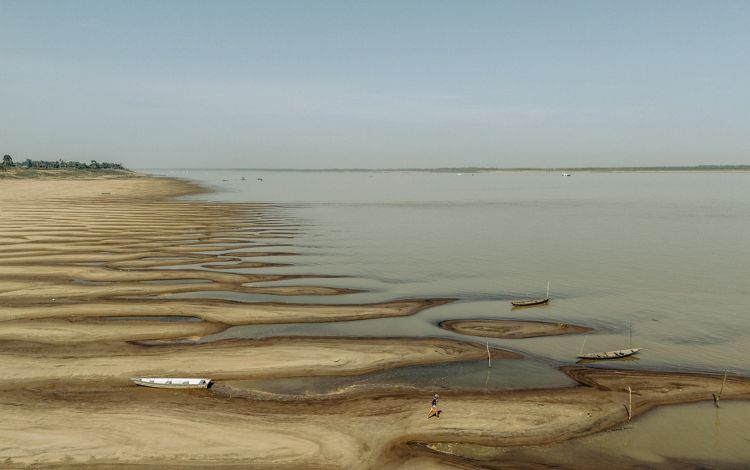

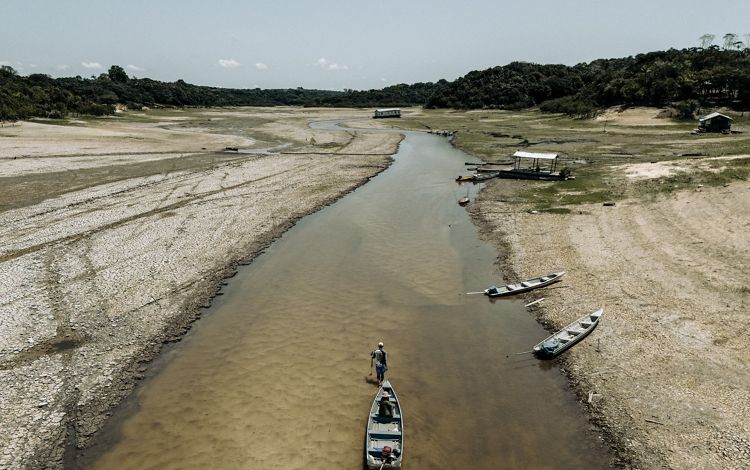
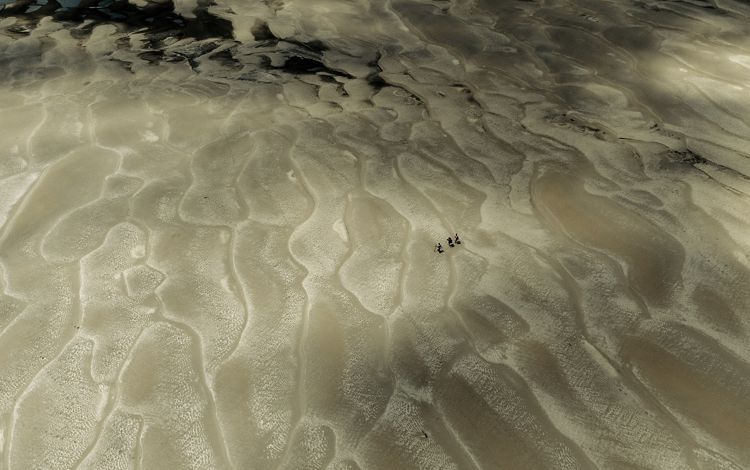
Landscape degradation doesn’t just destabilize riverbanks—it disrupts the entire water cycle. Without trees to absorb rainfall and hold moisture, both droughts and floods become more extreme. This makes forest preservation and restoration an essential tool for freshwater protection—something many local communities have already been doing based on their traditional knowledge. By planting native trees or sustainably using the forest and its fruits, Indigenous Peoples across the basin are managing their lands for culture and climate change impacts.
From Caquetá to Tapajós: A basin-wide response to climate change
While communities across the Amazon Basin are widely dispersed, they face similar challenges—and are finding solutions in nature.
“Communities are adapting to climate change by prioritizing and implementing solutions based on nature and indigenous knowledge systems,” explains Juanita Gonzalez, Nature-Based Solutions for Adaptation Leader for TNC Colombia.
Upstream in the Caquetá basin, Indigenous communities are partnering with TNC scientists to protect water quality and strengthen landscapes by monitoring the impacts of climate change and biodiversity loss on their lands, sharing sustainable farming and pest control practices, and implementing chagras—traditional agricultural systems that stabilize riverbanks, absorb floods, filter freshwater and preserve ancestral heritage.
“Additionally, they are integrating these nature-based solutions into their Territorial Management Plans—community-designed plans for territorial organization and natural resources management based on ancestral knowledge and traditions,” says Gonzalez.
Downstream, along Brazil’s Tapajós River, the same combination of landscape degradation and climate change threatens the fish that are vital to local diets and economies. When forests are cleared, the land can no longer filter the fresh waters that flow through them. The resulting dirtier, more polluted rivers choke out fish populations, as flooding and drought make it more difficult for them to migrate in the cycles that local fishermen rely on.
“Most fish are very sensitive to changes in water quality,” says Frank Ribeiro, a researcher at the Federal University of Western Pará, Brazil, who is studying the effects of climate change on fish populations in Amazon tributaries as part of the Águas do Tapajós project. “If the environment is poor, the fish won’t stay there—it’s not suitable for their survival.”
Ribeiro and his team, in partnership with TNC, are working to strengthen communities in their efforts to conserve aquatic biodiversity and freshwater resources. Protecting and restoring forests is just one strategy they might deploy as they seek ways to preserve vital fisheries.
Quote: Edmar Gomes
Water is life—for us, for everyone here. We depend heavily on the river and its water.
Edmar Gomes is one of the local fishermen participating in the Águas do Tapajós project, which sets sustainable catch limits in order to maintain healthy fish populations. The project also aims to protect breeding and nursery habitats while ensuring community members like him have a leading role in fisheries management decisions.
Adapting with nature
Across the Amazon Basin, these projects reflect a larger movement as communities, scientists and policymakers deploy a range of strategies to confront the region’s shifting climate realities:
- Connection: The Amazon must be protected as a connected system of waters. That means conserving free-flowing rivers, preventing river fragmentation, avoiding deforestation and promoting effective management of already-protected areas. It also involves supporting and strengthening Indigenous territorial rights.
- Collaboration: Indigenous leaders like Piranga and Ordoñez are guiding efforts to protect their waters. In the Caquetá basin, TNC’s partnerships support this sort of Indigenous leadership in designing and implementing local resilience strategies.
- Restoration: Reforesting land, restoring wetlands and floodplains and adopting sustainable farming practices all help regulate water flows, reduce flood and drought risks and improve water quality—while supporting biodiversity and carbon storage.
- Sustainable management: Science-backed community agreements, like those guiding fishery management in Brazil’s Tapajós River, protect natural resources and sustain local economies in the face of climate change.
- Traditional knowledge and predictive tools: Local communities possess generational knowledge of the intricate Amazon River Basin systems. Combining this knowledge with data-driven tools like hydrological models and climate risk assessments helps governments and communities anticipate and respond to floods and droughts with greater precision—and with solutions adapted to local context.
- Advocacy: Amazon rivers cross borders; so, too, must climate policies. Coordinated efforts across countries both upstream and downstream can protect headwaters, ensure sustainable practices and maintain connected corridors for migration.
Flowing forward
The Amazon River Basin is a place of profound connection—between rivers, people, lands and animals. As climate change threatens to sever these ties, Indigenous communities are showing the world how to adapt with nature. Their leadership offers a path forward—not just for the Amazon, but for all of us.
Global Insights Newsletter
Check out our latest thinking and real-world solutions to some of the most complex challenges facing people and the planet today.
